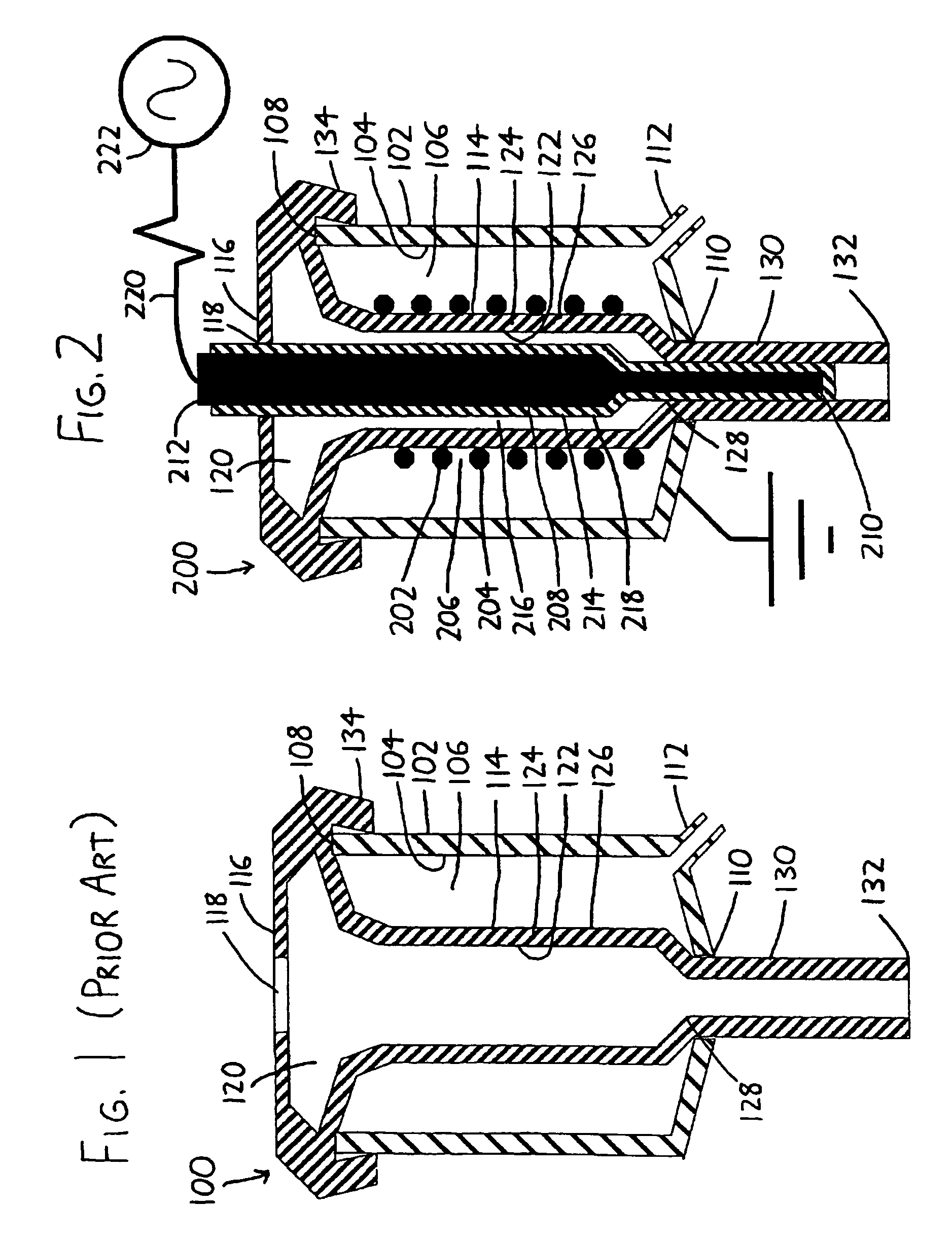Plasma-assisted disinfection of milking machines
a technology of milking machine and plasma, which is applied in the field of cleaning and sanitizing the teat cup liners of milking machines, can solve the problems of devastation of milking machine production, death of cows, and rapid spread of mastitis outbreaks in herds, and achieves the effect of convenient implementation
- Summary
- Abstract
- Description
- Claims
- Application Information
AI Technical Summary
Benefits of technology
Problems solved by technology
Method used
Image
Examples
Embodiment Construction
[0018]Referring to FIG. 2, wherein the teat cup 200 is modified from the teat cup 100 of FIG. 1 to present an exemplary version of the invention, a conductive first electrode 202 is situated within the teat cup shell 102, and is configured to closely surround the teat cup liner's exterior surface 126 (more specifically, to surround at least a portion of the exterior surface 126 of the liner barrel 124) as the teat cup liner 114 extends from the teat cup mouth 108 to its extraction end 110. The first electrode 202 is depicted as a coil wound about the exterior surface 126, though it could take other forms, such as a continuous conducting shell surrounding the liner's exterior surface 126. However, since it is desirable to have at least a portion of the liner's exterior surface 126 exposed to the pulsation chamber 106 so that pressure pulses supplied to the pulsation chamber 106 from the pressure supply 112 will flex the liner barrel 124 to massage the teat, a coiled first electrode 2...
PUM
 Login to View More
Login to View More Abstract
Description
Claims
Application Information
 Login to View More
Login to View More - R&D
- Intellectual Property
- Life Sciences
- Materials
- Tech Scout
- Unparalleled Data Quality
- Higher Quality Content
- 60% Fewer Hallucinations
Browse by: Latest US Patents, China's latest patents, Technical Efficacy Thesaurus, Application Domain, Technology Topic, Popular Technical Reports.
© 2025 PatSnap. All rights reserved.Legal|Privacy policy|Modern Slavery Act Transparency Statement|Sitemap|About US| Contact US: help@patsnap.com


